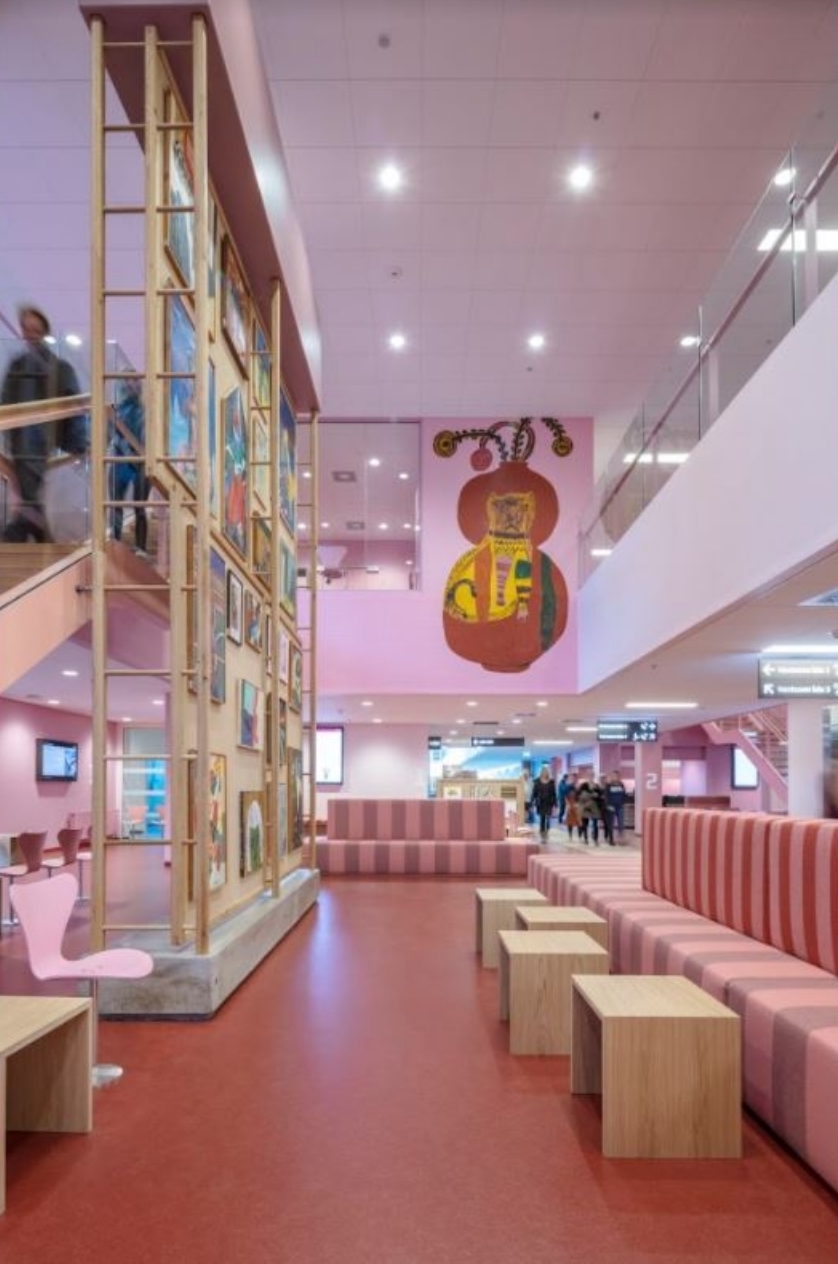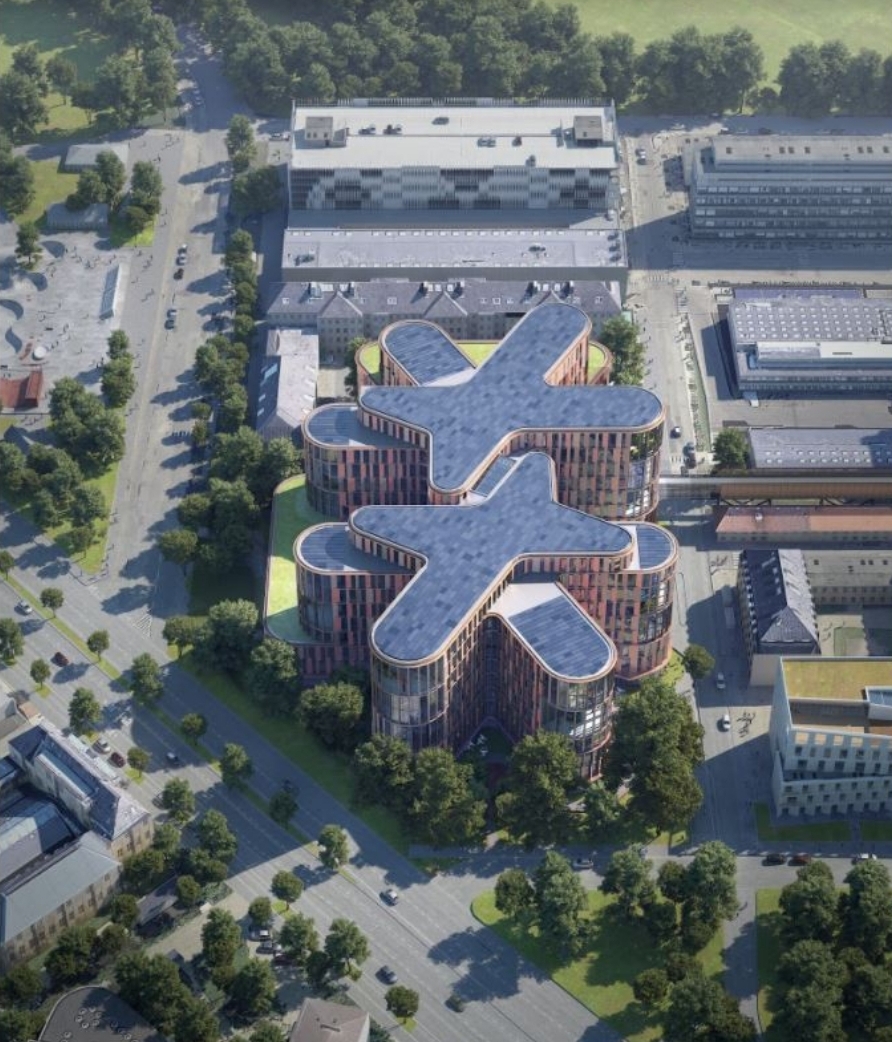How will hospitals be designed in the future? And which valuable lessons has the pandemic provided to this matter? We have asked Danish architect at Arkitema, Wilhelm Berner-Nielsen, in particular, to answer these questions.
Written by Rita Tvede Bartolomei
.jpg)
Transparent structures create more visibility, a better feeling of space and less of the “hospital like”- feel of a building. A play area in the new children’s hospital, BørneRiget in Copenhagen.
© Photo: Arkitema/3XN
“Engineers, architects and city planners need to work together to create human, healing hospitals. We need to distance ourselves from the institutional and rigid hospital designs of the past. In the future, more and more consideration should be given to how hospital users perceive the feeling of space, light, view, interior design and materials. Transparent structures within the building will create a better feeling of space, overview and improve security. Other important elements would be circadian rhythm lighting, optimized acoustics and art as an integrated part of the wayfinding system. Also more single rooms with private bathrooms must be created for patients, relatives need better areas to live and sleep in and children need great play areas.” says Wilhelm Berner-Nielsen.
.jpg)
Danish architect Wilhelm Berner-Nielsen at Arkitema believes in creating flexible hospital buildings that are more human and less institutional in their design.
© Photo: Arkitema
Moreover, the Danish architect argues that robust and hygienic surfaces of wood and textiles must be further developed for modern hospital buildings. Access to nature needs to be a crucial element of the overall design.
.jpg)
The new emergency hospital in Norway, ASH Hjelset (opening in 2023/2024), will be placed in a terrain with a surrounding green environment with easy access to gardens and hiking trails. © Photo: Arkitema
Arkitema has designed many hospitals in Scandinavia and one of them is the new emergency hospital ASH Hjelset in Norway (opens in 2023/2024), where nature will be an important contributor to health and welfare: a two-storey building for patient bedrooms will be built, where everyone has access to a green, walled garden and a sensory garden on the roof. “The surrounding landscape with gardens, fitness facilities, hiking trails and footpaths then becomes part of the treatment” according to Berner-Nielsen.

Innovative use of bright colours, patterns and artwork in psychiatric hospital in Skejby, Denmark.
© Photo: Niels Nygaard
This applies also to the psychiatric treatment facilities. These should ideally be placed in a natural environment and as many bedrooms as possible should have access to green outdoor areas. “This has been done at Skejby, Vejle and Esbjerg psychiatric hospitals in Denmark” continues the architect.
.jpg)
This is how the designers envision a patient room at Børneriget: gone is the institutional design of traditional hospitals. This has been replaced by space, a lot of natural light and playful environments, using massive timber in combination with colour.
© Photo: Arkitema/3XN
One of Arkitema’s most innovative and groundbreaking hospital designs was achieved in collaboration with 3XN, consulting engineers NIRAS, architect Kristine Jensens Tegnestue and interior designer Rosan Bosch: BørneRiget is Denmark’s new, national hospital for children in Copenhagen. The hospital, that opens in 2024, has been designed with the slogan “playfully logical” in mind.

Is this really a hospital? The winning design of Denmark’s new children’s hospital has a groundbreaking exterior and interior design.
© Photo: Arkitema/3XN
Berner-Nielsen says BørneRiget is a good example of how a creative and innovative design can change the way we perceive how a high-functioning hospital building should look. In Danish BørneRiget means “The Children’s Kingdom”.

Taking a virtual tour of a hospital building could be very easy in the near future, using VR-glasses to enter a “virtual hospital reality”. This could help eliminate bad design choices and create a better hospital for all users.
© Photo: Wren Handman
But what else will affect hospital design in the future? Artificial Intelligence (AI), Virtual Reality (VR), gaming technology and BIM, will be more extensively applied, he says. This new technology will help create better solutions on both a micro and a macro-level: from window and door placement to HVAC and room placement. Flexible room designs (using standardized modules) will diminish the need for costly and environmentally unfriendly reconstructions further down the line. Digital technology will not only help industrialize the building process and the creation of better materials, it will also lead to more effective user involvement.
More recently, the pandemic has provided hospital designers with tough lessons on infection control: Negative pressure rooms and better HVAC-systems can reduce the risk of spreading airborne pathogens throughout the hospital building. Flexible room solutions that can be converted and expanded, will help with medical surge capacity. In addition, emergency rooms will most probably be designed differently in the future, to isolate infectious patients better from non-infectious patient groups.